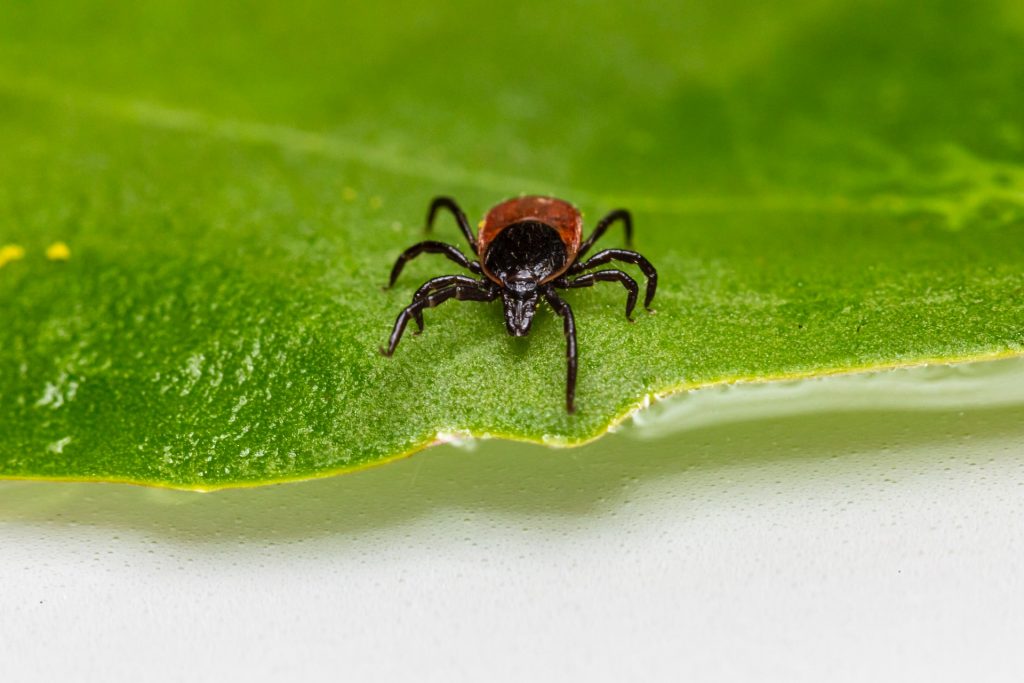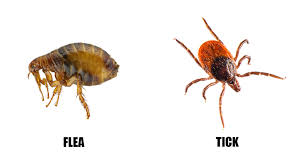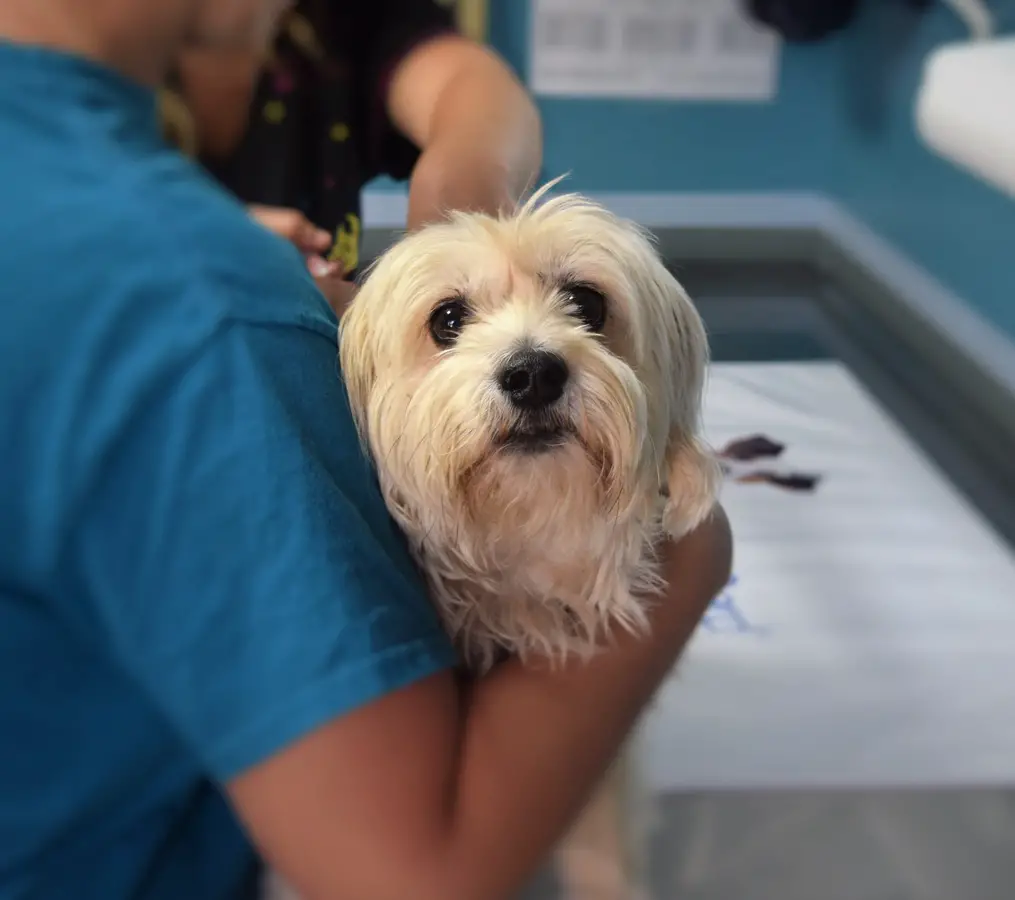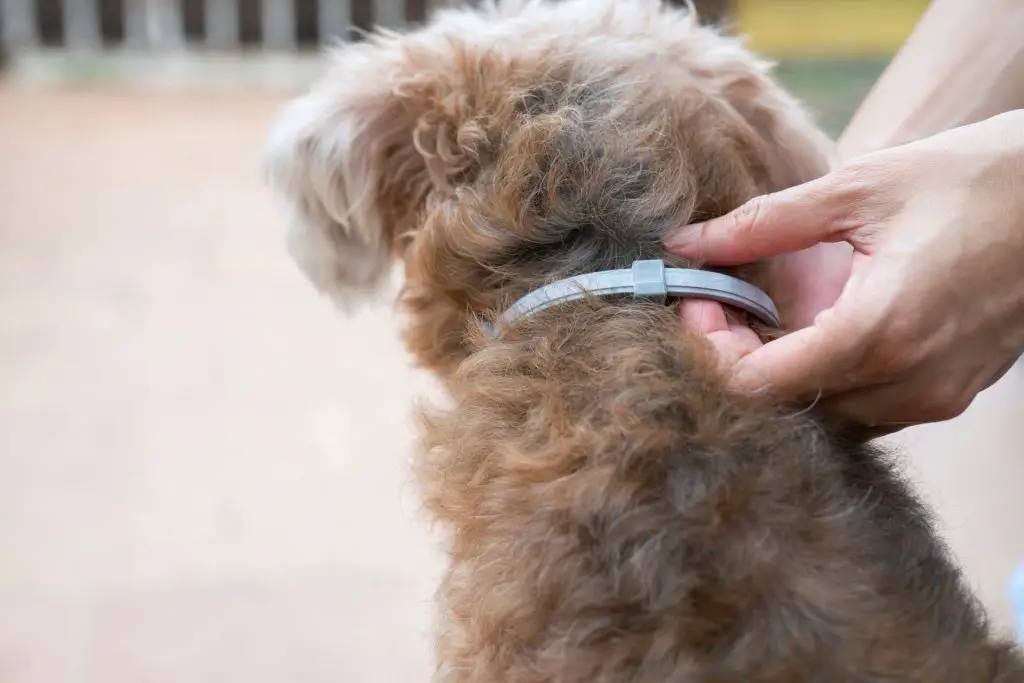Table of Contents
Ticks are a common problem among dogs. At some point, your canine will contract it one way or another. But to prevent the recurrence of the infestation, it’s important to observe preventive measures. In this post, I will share the methods I used on how to keep ticks off my dog together with other tips that will help you out.
As much as ticks are sneaky and pesky pests, there are ways to outsmart them. Take note that these tiny insects might be small, but they can cause a big problem. When not addressed, a tick infestation can compromise your dog’s health and even its life.
Ticks also bite humans!

Ticks aren’t just attracted to furry animals, they also gravitate toward humans! These insects have a natural sensor that detects carbon dioxide. The presence of carbon dioxide is a sign of life, therefore a source of blood that they use for food.
With this, ticks can bite and feed on your blood. However, since you don’t have fur where they can hide, most ticks will just crawl away and look for a furry animal.
While tick bites are typically harmless for humans, some will experience fever, rashes, and other adverse symptoms. This is why you should address a tick infestation as soon as possible. Take note that some ticks are carriers of the dreaded Lyme disease.
Ticks vs. fleas

I’ve talked to a lot of first-time pet owners and they are always confused about the difference between a tick and a flea. Both infect a dog’s coat, but they are two different insects.
Ticks are larger than fleas and have an average size of ¼ of an inch. But as they suck blood, these insects will grow bigger, almost similar to a corn kernel. They can have a light to dark color.
Most of the time, ticks only spend a few days on its host then it transfers to another area. Still, it doesn’t mean that the infestation will go away on its own. There would be eggs and larvae on your dog’s coat that will continue the infestation cycle.
Also, one of the major determinants between a tick and a flea is their legs. Ticks are spider-like since they have eight legs. Meanwhile, fleas only have six legs with antennae.
On the other hand, fleas are smaller than ticks for just 1/8 to 1/6 of an inch. They are almost invisible on the dog’s coat unless they started secreting fecal matter (pepper-like specks). Also, fleas are loyal parasites because they will cling to your dog’s coat.
Also, fleas jump but ticks can only crawl. This is why fleas can reach your dog easily even from a distance.
Where do dogs get ticks?
Ticks are more prevalent in areas where you think it won’t be present. This is why canines can easily catch it. The following are some of the tick hiding spots and potential sources you should be careful about:

🐶Infected animal
Does your dog love to play with other canines and cats? If so, it has a higher chance of contracting ticks. No matter how clean the pet is, it can still be a vehicle for an infestation.
Aside from that, wild animals like raccoons, squirrels, and rabbits are carriers of ticks. Even birds can be a host to ticks. If your dog loves chasing and hunting after them, don’t be surprised if the pooch will bring home a tick infestation.
🐶Dog parks

Dog parks are happy places for canines, but it’s also reeking with parasites and infections. A dog that goes to a dog park with no protection against ticks is likely to carry the insect home.
There’s a high chance that there’s an infected dog at any given time in a dog park. And even if an infected dog isn’t present, ticks can live on the ground waiting for a host.
🐶Your garden
Yes, even your own yard isn’t a safe place for your dog when it comes to ticks. Although ticks can’t jump or fly, they are keen crawlers. Ticks from your neighbors can transfer to your yard and hop into your dog’s coat.
🐶Guests
Lastly, your guests might be the vehicle of the infestation. They could have infected pets at home or contracted the ticks on the way to your home.
How to keep ticks off my dog
Keeping ticks off your dog is a year-round task. Dog owners know that the only way to avoid an infestation to keep your doggo protected from parasites. The following will help protect your pet from the threat of ticks
🐶Regular checks

The first thing you have to do is to check your dog’s coat for any signs of ticks. Sudden weakness, incessant scratching, and skin bumps are some of the tell-tale symptoms of a skin parasite. The presence of a tick is enough proof that your dog is experiencing an infestation.
You can do regular checks while brushing your dog. Check for any changes that could point to a tick infestation or bite. You should also run your hands through your dog’s coat and skin. If you feel any bumps or rough spots, check it closely.
Aside from that, check the skin folds, especially around the neck, armpits, ears, and legs. These are the hiding spots of ticks. Don’t forget to check the space between the dog’s toes as the sneaky tick can hide within it as well.
🐶Topical tick treatments
One of the most convenient preventive steps against ticks is topical treatments. You can use a tick spray that you will apply directly to the dog’s coat. This works instantly, but you have to ensure that every inch of your dog’s coat is covered.
You can also consider gels or liquids like Advantix that you will administer along your dog’s spine. As the skin absorbs the treatment, it will spread all over the dog’s body. It will kill ticks upon biting or contact.
Many dog owners use topical treatments to both prevent and kill existing ticks. It’s usually safe, but you should consult the vet if your dog has pre-existing conditions.
🐶Oral medications

Oral medications are often prescribed by a veterinarian and can be purchased at the vet’s clinic. It’s a convenient option as long as you know how to trick your dog into taking a tablet or pill.
This medication contains a drug that will spread in the bloodstream. Once a tick feeds on the treated dog’s blood, it will die. This is a very effective treatment and preventive measure against ticks and fleas.
Take note that you should consult the vet before giving your dog any topical tick treatment. This way, you can avoid potential side effects and adverse reactions from your doggo.
🐶Tick shampoo
Another convenient solution is a tick shampoo. This a medicated type of shampoo, which you will use once every quarter as a preventive solution against ticks. For dogs with an infestation, it has to be used every two days or weekly, depending on the vet’s prescription.
Tick shampoo is available over the counter so you can treat your dog at home. Just make sure that the dog doesn’t have any allergies to the ingredients of the shampoo you’re going to purchase.
🐶Pest collar

Tick and flea collars are very effective solutions against ticks. It’s also easy to use since you only have to put it around your dog’s neck like a typical collar.
Some of the popular brands here are Seresto, Adams, Virbac, Hartz, and Bayer. Take note that there’s a special tick collar for dogs so you shouldn’t interchange them with those made for cats.
It’s important to consult the vet before purchasing any dog collar. This way, the vet can advise about the best pick based on your dog’s size, overall health, coat type, and so on.
The good thing about tick collars is their waterproof nature. Also, it doesn’t need the ticks to bite in order to die. Lastly, most tick collars are also made to protect against fleas.
🐶Cleaning your garden
Aside from applying treatments on your dogs, it’s also important to tackle the source of the ticks. You can start in your yard. Remove any thick foliage close to the ground because this is where tricks usually hide.
You can also apply a granular treatment to kill insect pests. However, make sure that all your pets will not have access to the treated areas to prevent poisoning. I suggest hiring a professional if you need to use a type of chemical on large parts of your garden. This will save you from guesswork while keeping you safe.
🐶Clean your dog’s quarters as well

It’s important to keep your dog’s stuff cleaned regularly. You should cycle the dog’s bed in the washing machine then put it under direct sunlight to dry. This will kill any ticks hiding on the material.
Aside from that, you should also clean dog toys, bowls, collars, and leashes. You shouldn’t take chances as ticks are sneaky and can hide in small spaces.
Also, make it a habit to vacuum around the house, especially if your dog just got outside. This way, you can remove ticks that hitched on you or your dog.
🐶Limit contact with other animals
Lastly, consider limiting your dog’s contact with other animals. If it’s impossible to prevent your dog from mingling with other dogs, ask the owner courteously if their pet has some kind of tick protection. Most responsible owners will have something in place for their dogs. Also, they won’t mind you asking as long as you do so gently and politely.
Aside from that, you can place a tick collar on your dog. This will give you peace of mind that ticks can’t harm your pooch.
In this video, Pet Health Network tells us more about the life cycle of a tick on how it infests a dog:
Frequently Asked Questions
Q: What are ticks attracted to?
A: Ticks are attracted to carbon dioxide because it’s an indication that there’s a living thing nearby. They also detect body heat to identify if a being can be a host and food source. Aside from that, the lactic acid in our sweat is appealing to ticks. Above all, ticks like the warmth and security of the dog’s fur because they can’t get caught easily.
Q: What time of the day are ticks most active?
A: Ticks have very erratic activity. Some are more active during humid hours while others prefer moving to hotter temperatures. Observing your dog’s coat will give you an idea. Also, the species it infests will affect how active ticks will be. But regardless of its activity, it’s important to get rid of the pest immediately.
Q: Do ticks jump from dog to human?
A: Yes, your dog can transport ticks to you. However, ticks don’t jump. Instead, the insect will crawl into your skin, hair, or clothes. This can happen while petting, hugging, grooming, or simply sitting beside the pooch. Unless you address the tick problem, you will also become a target of the bloodsucking insect.
Q: What kills ticks on dogs instantly?
A: A vinegar and water solution is guaranteed to kill ticks upon contact. The acidity of the vinegar is abrasive enough to dehydrate the tick and kill it almost immediately. You can use this solution as a preventive treatment on your dog’s coat, but avoid spraying it on their eyes and nose.
Q: At what temperature do ticks die?
A: Ticks will die at -2 to 10F. On the higher levels, ticks will succumb to death at 135F for at least 10 minutes. This is the reason why most ticks can survive cold wash and tumble dry. If you can’t use temperature to kill ticks, there are still other methods you can explore.
Final words
I knew how to keep ticks off my dog through proper consultation with the vet. It’s important to involve a veterinarian to ensure that your dog will be safe on the method you’re going to use. Also, the vet can prescribe an oral treatment to aid with your efforts.
Did your dog get ticks before? How did you deal with it? Share your tips below!
